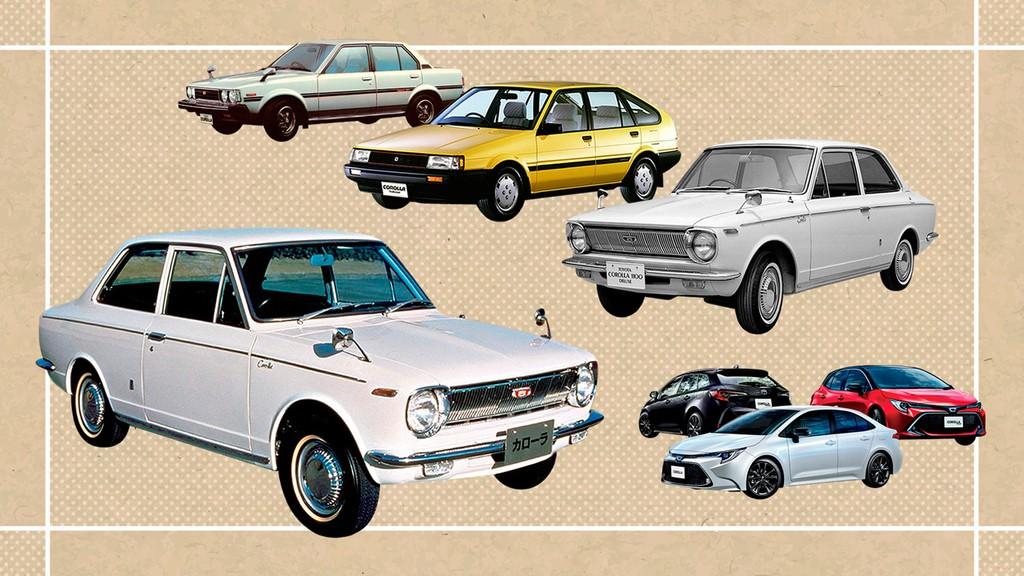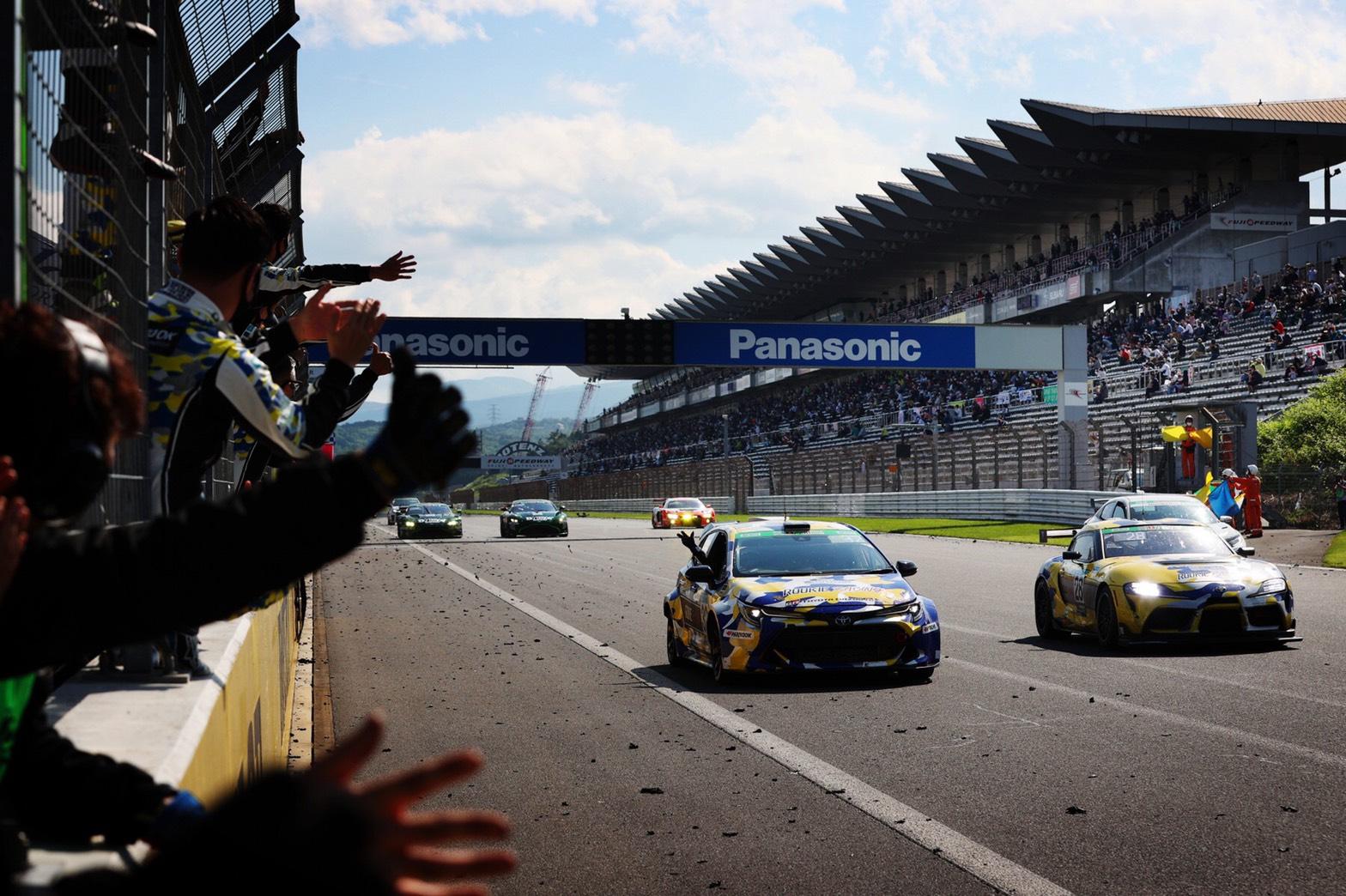
With a history of more than 50 years, the Corolla has now hit the historic milestone of 50 million units sold worldwide. In celebration, Toyota Times looks back on the history and development of the Corolla in the form of a quiz.

Since its debut in 1966, the Corolla has always paved the way for Toyota and has long been chosen by a wide variety of customers all over the world.
The Corolla played a vital role in Japan’s motorization in the 1960s and onward. Eiji Toyoda, who was one of the senior executives leading the initial Corolla project, once said: “While some are of the opinion that the Corolla rode the wave of motorization, I think it’s the other way around. We worked to create popular demand with the Corolla and in my opinion that’s just what we did.”
Outside of Japan, the Corolla has always represented the Toyota brand in pioneering markets. It has also been at the center of Toyota’s unwavering effort to be best-in-town in each country and region in which Toyota operates, providing diverse values in tune with each market. For some, the Corolla brings back fond memories of owning a car for the first time. For others, depending on the market, the Corolla is a high-class premium car that serves as a symbol of success.
With a history of more than 50 years, the Corolla has now hit the historic milestone of 50 million units sold worldwide. In celebration, Toyota Times looks back on the history and development of the Corolla in the form of the following quiz, which links to previous Toyota Times content and a special website commemorating the Corolla’s 50th anniversary. We hope you enjoy it.
Q1. What is the origin of the name “Corolla”?
A. A crown of flowers
B. A robust decorative plant
C. The name of a luxury resort
The word “corolla” refers to the ring of petals around the central part of a flower (which is considered to be the most beautiful part of a flower). The name was intended to evoke the image of a beautifully styled, eye-catching, high-quality compact car.
Answer: A
Q2. What generation is the current generation of the Corolla?
A. 12th generation
B. 7th generation
C. 4th generation

(From right) Corolla Sport, Corolla (sedan), Corolla Touring
Answer: A
Q3. What is the nickname of the coupe version of the Corolla, “Levin”?
A. Nana Roku (seventy-six)
B. Hachi Roku (eighty-six)
C. Yon Roku (forty-six)
The fifth-generation Corolla came with a switch from a rear-wheel-drive layout to a front-wheel-drive layout and greatly expanded interior space. The Corolla Levin, which was the coupe version of the fifth generation of the Corolla, retained the rear-wheel-drive layout of the previous generation.
Known as the “AE86”, the Levin and the Sprinter Trueno were equipped with a newly developed engine, the 4A-G type 1.6-liter DOHC, giving birth to the nickname of the Hachi Roku (which means “eighty-six” in Japanese).
For more information about successive generations of Corollas, including the fifth generation, and their historical background, click here.
Answer: B
Q4. The development of the Corolla started with the “80-plus points” concept. What was the meaning of that concept?
A. “We don’t have to aim for a perfect score of 100.”
B. “Excellent total balance combined with outstanding performance of 90 points or more”
C. “Getting 80 points all around”
Rather than meaning that getting 100 points was not necessary, “80-plus points” meant achieving an excellent total balance, and, on top of that, outstanding performance of 90 points or more in certain areas. As a result, the concept expressed the “essence of practical car manufacturing” for making a car that would last a long time.
For more information about the concept and historical background of the first-generation Corolla, click here.
Answer: B
Q5. For what was Tatsuo Hasegawa, who led the development of the first-generation Corolla, seeking in terms of the “plus” in his “80-plus points” concept?
A. Fashion sense
B. Entertainment performance
C. Sportiness
The first-generation Corolla model introduced a curved front windshield before such was adopted by the Toyota Corona and Toyota Crown. Also, to achieve the high level of performance at high speed that was required of cars at the time, the first-generation Corolla came with a five-bearing engine. It pursued sportiness both in its exterior styling and performance.
For more information about the historical background of the development of the first-generation Corolla and the thoughts of Tatsuo Hasegawa, who was the person in charge, click here.
Answer: C
Q6. The front suspension of the first-generation Corolla featured a device that had only been used in a few cases around the world since 1955. What was it?
A. MacPherson strut
B. Torsion beam
C. Double wishbone
Toyota adopted MacPherson struts for the front suspension at a time when it had technical tie-ups with overseas manufacturers and was receiving technical drawings for knockdown production. But the shock absorbers (which are important parts that affect a vehicle’s handling stability and ride quality) used in this case were developed in-house.
This was due to the wish of the then second president of Toyota, Eiji Toyoda, who said: “If we don’t have people who possess the know-how to make it and can give instructions to others, then we won’t be able to obtain satisfactory results.”
This passion for manufacturing became Toyota's basic philosophy, and through experience, the company was able to gain confidence in its own technological capabilities, as Shiro Sasaki, who would become the chief engineer of the second-generation and third-generation Corollas, later stated.
For more information on the background behind the development of the second-generation and third-generation Corolla, which inherited the passion for manufacturing that came with the development of the first-generation Corolla, click here.
Answer: A
Q7 When the Corolla debuted in 1966, what were the three things that were called the “new three sacred treasures” in Japan at the time?
A. A color television, car, and air conditioner
B. A refrigerator, an automatic washing machine, and a radio
C. A vacuum cleaner, a personally purchased house, and a cell phone
When the first Corolla was introduced in 1966, Japan was in the midst of rapid economic growth, and the buzzword “the new three sacred treasures”, also known as “the 3Cs”, appeared, in which the 3Cs stood for “color TV, car, and air conditioner”, and these were considered representative of the aspirations of the masses.
For more information about the development story of the first-generation Corolla and the historical background of the time, click here.
Answer: A
Q8. What color were the indicators on the rear tail lamps of the first-generation Corolla?
A. Blue
B. Red
C. Orange
When the first-generation Corolla debuted, orange indicators were rare, and red was the most common color. Incidentally, it was not until around the mid-1970s that orange indicators became commonly used in the majority of Japanese domestic vehicles. European vehicles were already moving toward orange indicators, and so the first-generation Corolla had boldly led the way in Japan with the incorporation of such detailed trends.
For more information on lesser-known Corolla trivia, click here.
Answer: C
Q9. What was the nickname of the mini-station wagon-like version of the fifth-generation Corolla in Japan, which had front-wheel drive?
A. Liftback
B. Hatchback
C. Pickup
The fifth-generation Corolla saw a major shift from a rear-wheel-drive layout to a front-wheel-drive layout. The most notable benefit of the change to rear-wheel drive was the achievement of a major expansion in interior space.
In addition to the four-door sedans, the new body lineup also featured a convenient five-door model that could be used much like a mini-station wagon. Toyota called this form factor a “liftback”.

For more information about successive generations of Corollas, including the fifth generation, and their historical background, click here.
Answer: A
Q10. What rally did the Corolla win for the first time in 1973?
A. Rally of Egypt
B. Press-on-Regardless Rally
C. Paris Dakar Rally
A TE25 Corolla with a 2T-B engine (based on the 1600SR of the second-generation Corolla) chalked up the first rally victory for the Corolla by winning the Press-on-Regardless Rally held in the United States in November 1973. Toyota’s first World Rally Championship victory was achieved in an unexpected way.
For more information on the history of Corolla and motorsports, click here.
Answer: B
Q11. What powered the Corolla that made a spectacular debut in a 24-hour endurance race in 2021 in Japan?
A. Hydrogen
B. Electricity
C. Bio-ethanol
Toyota, which is developing hydrogen engine technology, entered a Corolla equipped with a hydrogen engine in the Super Taikyu Series 2021 Round 3 Fuji Super TEC 24 Hours Race held in May 2021. President Akio Toyoda drove as “Morizo”.

For a detailed report on the 2021 24-hour endurance race, click here.
Answer: A
Toyota Times hopes that this quiz has illustrated how the Corolla has shared a path with the lives of many people for more than half a century and has thus been impacted by the background and trends of the times.
The Corolla, which represents Toyota, will continue to evolve with new eras while staying close to many people.
For a fuller dive into Corolla trivia, please visit the special website (created in 2016) that commemorates the 50th anniversary of the birth of the Corolla.

